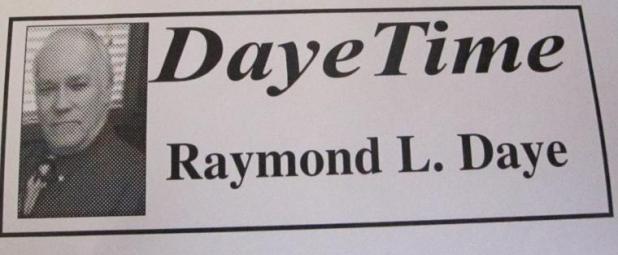
DayeTime: Making a 'lazy river' work for us
When Louisianians think about energy, most immediately think about oil and natural gas. A few in North Louisiana may add lignite coal to that list. Some on either side of the state might also include their major river as an energy source.
While the Mississippi and Sabine are working for the people who live along their banks, the Red is just plain lazy -- and we seem content to let it be lazy.
More than 30 years ago the notion of hydro-electric power on the Red River was floated out for politicians’ and the public’s consideration.
The U.S. Army Corps of Engineers noted that, while they were building five sets of locks and dams on the river, it would not cost much to include a hydropower generating plant in the designs before the structures were built.
As a young reporter working elsewhere in this area, I attended several hydropower meetings in the state. A group of several cities toyed with the idea of joining together to own and operate the Red River plants, but it never happened. The notion of hydroelectric power was pooh-poohed as unnecessary, given the large reserves of oil and natural gas in the state.
There were also comments that a hydroplant has too little energy output in relation to the necessary economic input.
The fact that it is less expensive to operate once built, and that the energy produced is then less expensive for the consumers, was lost in the “isn’t the oil industry marvelous” afterglow.
It wasn’t that hydropower was a completely alien concept. A hydropower plant had been in operation at Toledo Bend for many years. The Sabine River is still producing 205 million kilowatt hours of power per year. Despite the lack of interest in making the Red work for the public, the Town of Vidalia built the Sid Murray Hydroelectric plant at the Old River Control Structure -- located between Simmesport and Vidalia -- during that same time.
I remember well when people laughed at Vidalia Mayor Sid Murray over his “pipe dream” of a large hydroelectric plant that would harness the raw power of the Mississippi and convert it into usable electricity.
He started talking about his dream in 1977, but he didn’t let doubters deter him.
My first job as a journalist was as a news bureau manager in Vidalia in 1978. I interviewed Murray about his hydropower hopes and followed its progress after I moved on to another newspaper, culminating in covering the dedication ceremony in 1990.
Construction of the $520 million pre-fabricated structure began at Avondale Shipyard in New Orleans in 1985. The 12-story, 25,000-ton plant was towed 208 miles up the Mississippi from New Orleans. Nicknamed the Merrimac, it is still the largest “vessel” to be towed up the Mississippi past Baton Rouge. So, with hydro successes on both sides of the state, can we expect a bunch of “baby” power plants on Red River?
Maybe so but probably not.
It seems the ho-hum attitude toward Red River hydropower prevalent in the early/mid-80’s and early ‘90s is still with us.
There is no cheerleader like Sid Murray ramrodding the effort and building public support for an alternative to oil and natural gas to produce electricity for homes and businesses.
With no argument being made that hydropower is good for consumers and good for the environment, that leaves only the economic argument to make the case. That may not be a very convincing argument in the current energy market. Of course, it may be too late 20 years from now when it might make sense. It seems interest in constructing a power station at Lock & Dam 1 has completely faded.
There are still efforts to revive interest in the nearby Lock & Dam 2, with a bill in Congress to give developers more time under their permit to begin construction.
There is also still active interest in hydropower plants at the three upper locks/dams.
Those seeking to build a hydropower plant at Lock & Dam 2 are trying to lock down power purchase agreements before they actually start building the generating plant. They need those agreements in hand before they can get the estimated $130 million needed to build the 52-megawatt plant.
The other plants on the Red would be smaller -- totaling about the 92 megawatt capacity of the Murray station -- with a total combined construction cost of $450 million.
They say there is no new thing under the sun. If it takes 25 years for Red River hydropower to make a full rotation, I’ll be 87 when it comes around again.
Maybe the next time -- when the oil reserves are almost depleted and what little there may be is held hostage in sandboxes overseas -- someone will see the wisdom in letting all that water rushing by us on its way to the sea create the energy necessary for us to live our lives.
If it had been done 25 years ago, think of the millions upon millions of gallons of water that have rushed past us and the millions upon millions of hours of electricity that would have been produced for our use.
It would also have saved countless cubic feet of natural gas and myriad gallons of fuel oil that would still be in reserves to be tapped for future use for other purposes, such as fuel for automobiles. We will never be able to have hydro-powered cars. We will probably also never have hydropower plants on the Red.
But they are considering a wind energy farm in Evangeline Parish.
That’s another energy story for another day.
